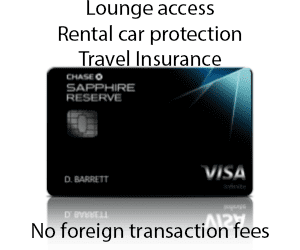Unified Messaging Systems Is Working with Colombia to Improve Disaster Response
From earthquakes and flooding to terror attacks and manmade disasters, Colombia is no stranger to catastrophes. Officials and the private sector alike have been making progress on managing these threats over the past decade, but there is still much to be done.
Unified Messaging Systems (UMS) is one company that is bringing new technology to the task. The Oslo, Norway-based firm helps first responders and auhtorities communicate better with one another and the general public during an emergency.
Photo: Anand Anupam of Unified Messaging Systems gives a presentation on his companies services during Andicom 2016 in Cartagena. (Credit: Loren Moss)
To better understand how the systems work and are being used in Colombia, Loren Moss, executive editor of Finance Colombia, recently sat down with Leon Hausman and Anand Anupam of UMS. They discussed their operations, their experience at Andicom 2016, and their outlook on the Colombian market.
Finance Colombia: What is Unified Messaging Systems and what leads you to come to conferences in Colombia?
Leon Hausman: UMS is a Norwegian company founded in 1997. From our beginnings we have been dedicated to the development and implementation of critical messaging solutions and national alert systems. Nowadays we are leaders in the world market in this kind of industry.
At Andicom, we had the honor of presenting the different technologies that are available nowadays on the market for attention to disasters. We discussed how these technologies are integrated into the different channels of communication and existing infrastructure in the country to communicate notifications of emergency alert messages to certain segments of the population. They also go out to groups of authorities so as to be able to attend to a disaster and minimize any kind of risk and safeguard the greatest number of lives in the face of any eventuality.
Finance Colombia: Fascinating. And how does the communication work?
Leon Hausman: Generally, the area of attention to disasters has been handled by radios, handsets, LBS, and the authorities. In many countries, this all works with handsets, walkie-talkies, and radios.
Finance Colombia: What challenges do you face in the fascinating digital world where the radios handle data? They are connected to internet instead of an antenna?
Anand Anupam: Right, so the radio technology that you are talking about is essentially used for first responder communication. For example, within the police force, among themselves. So there are two kinds of technologies that you’re talking about. One is public warning, which is to people, to citizens. Everyone doesn’t have a radio phone, right?
The other is the communication between first responders. And what is happening across the world now is you have the same systems communicating to radio channels and to the walkie-talkies. You have tetra radios now, so you have the same system communicating to tetra radios as well as to the public communications channels on phones and whatnot.
In fact, today in some of the European countries we work with technologies that allow you to have conference calling between a person with a radio on the ground, with a person who has a cellphone on the ground, and with the emergency operations center that is on a fixed-line phone. So you see more and more technologies converging these days, especially on the kind of use cases that we talked about.
Finance Colombia: Why Colombia? You guys obviously are global. What did you see in the Colombian market that made you decide to establish here? Are your operations here specific to Colombia, the Andean region, South America, and the Americas?
Anand Anupam: We’ve been working in the Latin American market for the last five years, across countries from Mexico and all the way to Argentina. The reason why we have a focus on Colombia is primarily because of the kind of engagements that we are having here, mostly with MinTIC — the ministry of communication — as well as the civil defense organizations.
We’ve been in discussions with them over the last couple of years around multiple technologies, our experiences, and use cases. And looking at the kinds of disasters in Colombia, I think systems like ours make a lot of sense.
Finance Colombia: In what kind of applications have you seen success? For example, In India we have seen there has been recent flooding. Here in Colombia, of course, we have floods and we have earthquakes. We don’t have tornadoes or hurricanes, but what use cases have you seen specifically where your system has been employed and you’ve been able to find success?
Anand Anupam: We have worked with systems and incidents from those as localized as something seen in a campus or an event in a particular community to events that have an impact on the beaches.
Earlier in the presentation we were talking about multi-hazard systems that are able to handle communication and incidents at the local level as well as the national level. So our systems work, for example, on tsunamis, earthquakes, flooding, cyclones, as well as man-made disasters like bomb-blasts, terror attacks, large-scale demonstrations, or public accidents. So use cases include systems capable of handling all of these various catastrophes and disasters.

























